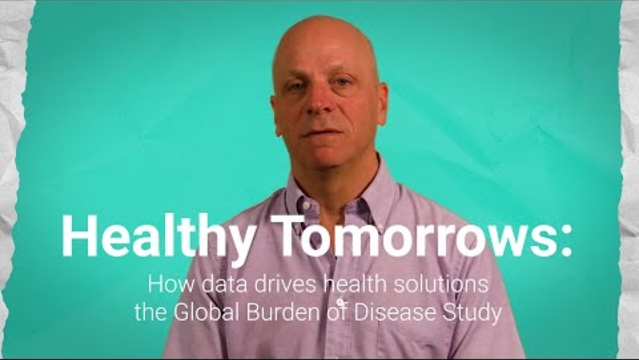Healthy Tomorrows
Healthy Tomorrows is a video series interviewing experts from around the world on children's environmental health issues, how and why children are at the most risk, and ways to address the global crisis.
These short videos are less than 15 minutes and provide a deep dive into different topics that might be of interest to policymakers, programme implementors and communities.
The video content has been made available for informational and educational purposes only. The views expressed in these videos are those of the individual or organization they represent and do not necessarily reflect the views of UNICEF.
Lead poisoning
Even small amounts of lead exposure over time can have lifelong effects on children, inflicting irreversible damage to their developing bodies and brains. Therefore, prevention is paramount.
The Healthy Tomorrows video series hears from experts examining the impact of lead on children and how to prevent childhood lead exposure.
How lead affects children and lifelong health
Howard Hu, professor of population and public health sciences at the University of Southern California, examines how lead impacts children and lifelong health. He explains the life course paradigm, where lead exposure can start in the womb and move transgenerational. Because of its insidious effects, the best solution to end childhood lead poisoning is prevention.
How to test for lead in the environment with XRF analyzer
Jack Caravanos, clinical professor of environmental health sciences at New York University, and Bret Ericson, adjunct professor of environmental health sciences at New York University, share a tutorial on how to use a portable X-Ray fluorescence (XRF) analyzer to test for lead in the environment.
New York City works to end childhood lead poisoning
Paromita Hore, the director of environmental exposure assessment and education at the New York City Health Department, shares how New York City has developed a lead surveillance system that exposes how children in the city are being exposed to lead.
Methods of addressing lead-contaminated environments
Gordon Binkhorst, a senior technical advisor at Pure Earth, explains different ways to clean up environments contaminated by lead. He discusses the differences between remediation and risk mitigation techniques, as well as different strategies that could be applied.
Using multiple lines of evidence to identify priority lead sources
Jenna Forsyth, PhD, is a research scientist with the School of Medicine and affiliated with the King Center for Global Development, the Woods Institute for the Environment and the Doerr School of Sustainability. She shares some of findings from her research on lead exposure in Bangladesh and how she used multiple lines of evidence in order to find the primary sources of lead harming the community.
Climate change
Climate change is raising average global temperatures and increasing the frequency, intensity and duration of heatwaves. Populations everywhere are experiencing heat stress, which is contributing to significant negative health outcomes, particularly for infants, children, pregnant women, the elderly, outdoor workers and other vulnerable people. For infants, young children and pregnant women, greater heat stress increases the risk of adverse birth outcomes, chronic health issues and infant deaths.
How heatwaves harm children
Director of the Global Consortium on Climate and Health Education at Columbia University, Cecilia Sorensen, provides her expert views on how children are uniquely at risk from extreme heat. She discusses how heat is a teratogen, affecting normal development. Therefore, it’s important to protect children from heat, using frameworks like ‘B.E.A.T. the Heat’.
How data drives solutions in the Global Burden of Disease study
Michael Brauer, a principal research scientist at the Institute of Health Metrics and Evaluation (IHME), explains how his work contributes to the Global Burden of Disease study. This annual research effort is the largest and most comprehensive attempt to quantify health loss across regions and over time, providing crucial insights to improve health systems and reduce disparities worldwide.
How the U.S. Government addresses children's environmental health
This is a two-part video series exploring the U.S. President's Task Force on Environmental Health and Safety Risks to Children. The first video delves into the task force’s creation and purpose, while the second highlights its achievements and the challenges it has faced in improving children's environmental health in the U.S., with a focus on the Lead Subcommittee. Content from the Collaborative website does not necessarily reflect the views of the U.S. EPA.
In this video, Grace Robiou, Director of the U.S. EPA's Office of Children's Health Protection, and Leith States, Chief Medical Officer to the Assistant Secretary of Health at the U.S. Department of Health and Human Services, discuss the U.S. President's Task Force on Environmental Health and Safety Risks to Children. They explain its origins, goals, and how it operates to protect children from environmental hazards and health risks across the nation.
In this video, the tri-chairs of the US President’s Task Force on Environmental Health Risks and Safety Risks to Children, Lead Subcommittee, discuss their experiences on the Task Force including accomplishments, challenges and the benefits of a whole-of-government approach to addressing children’s environmental health.
